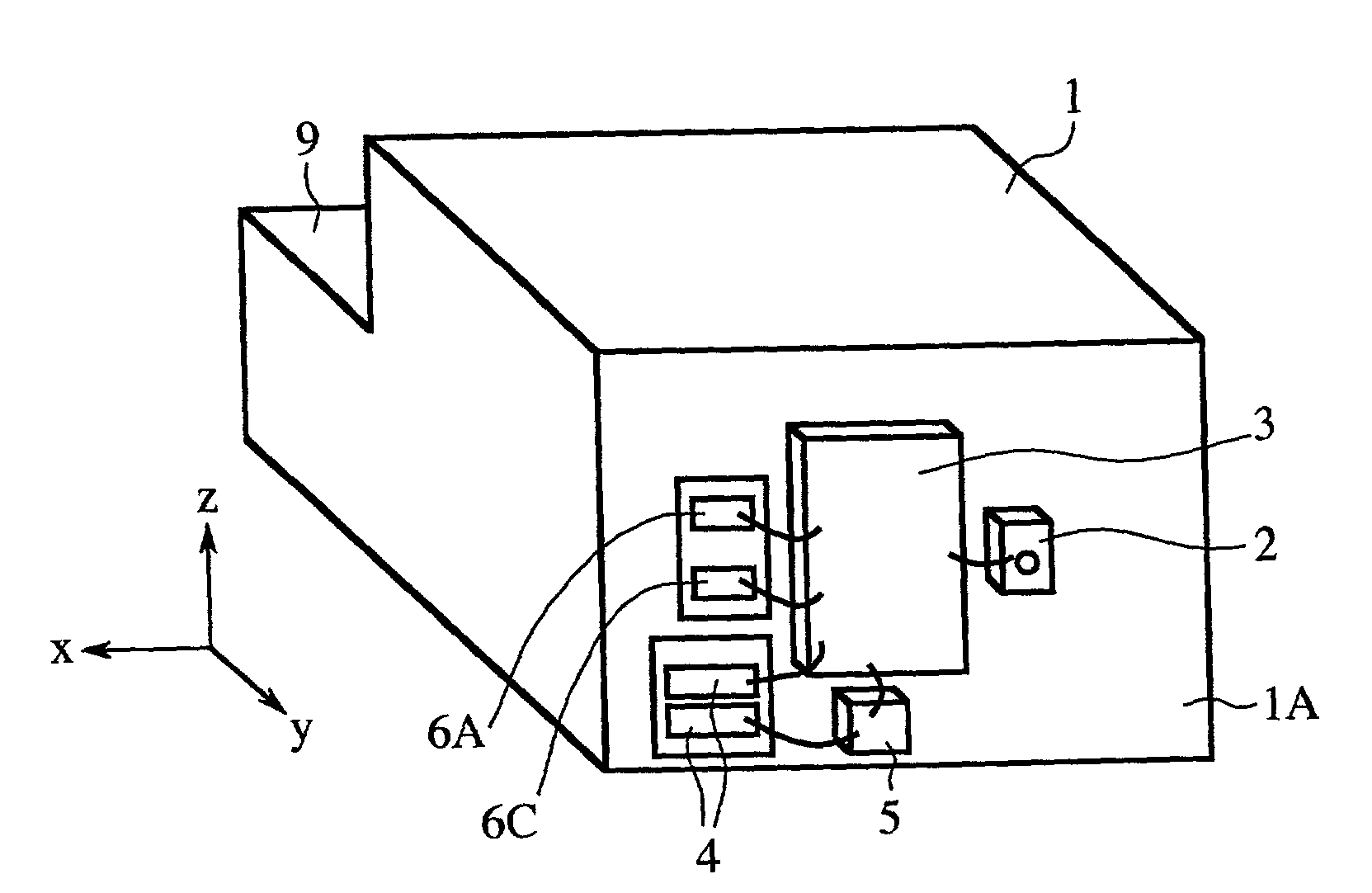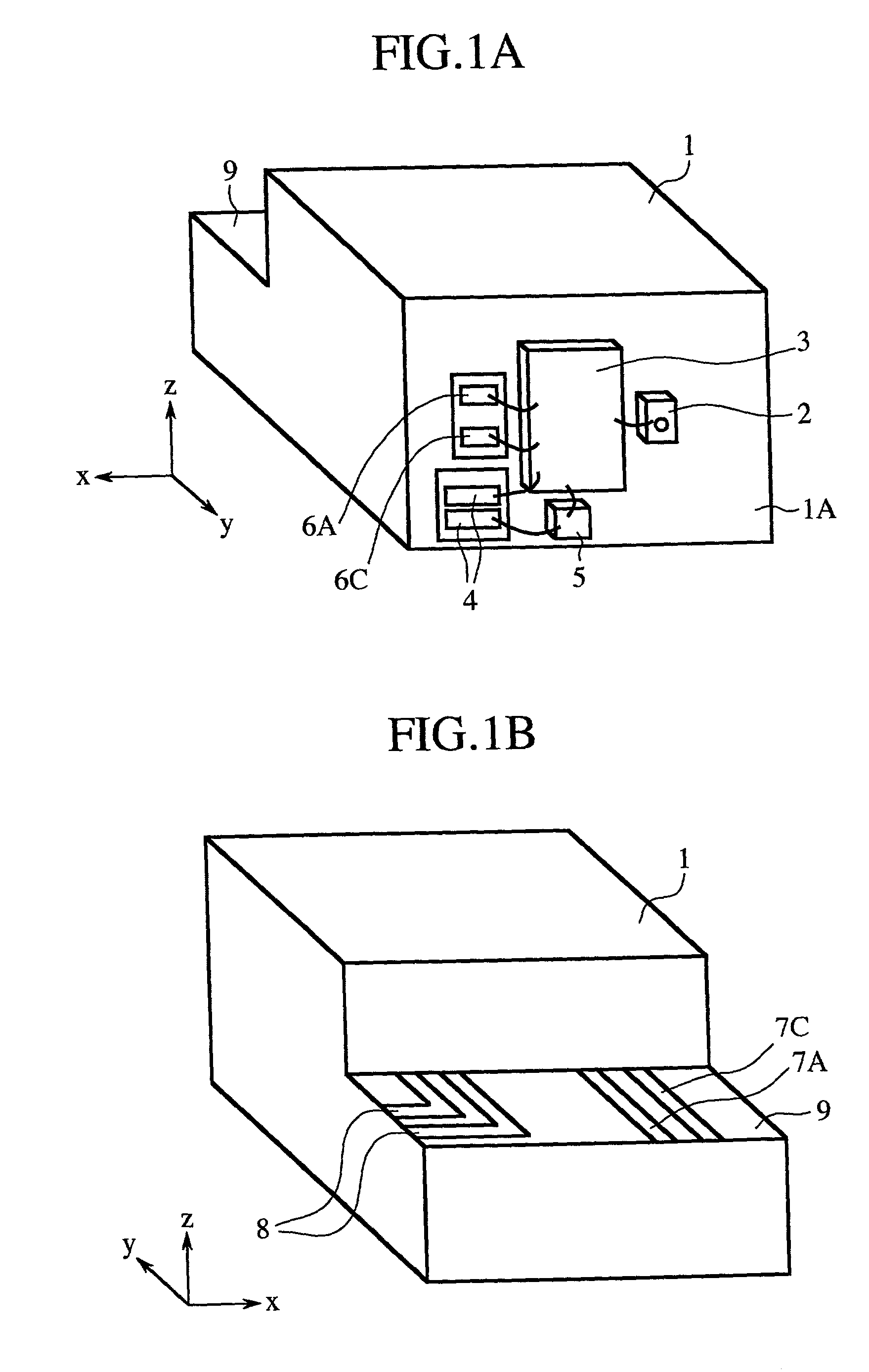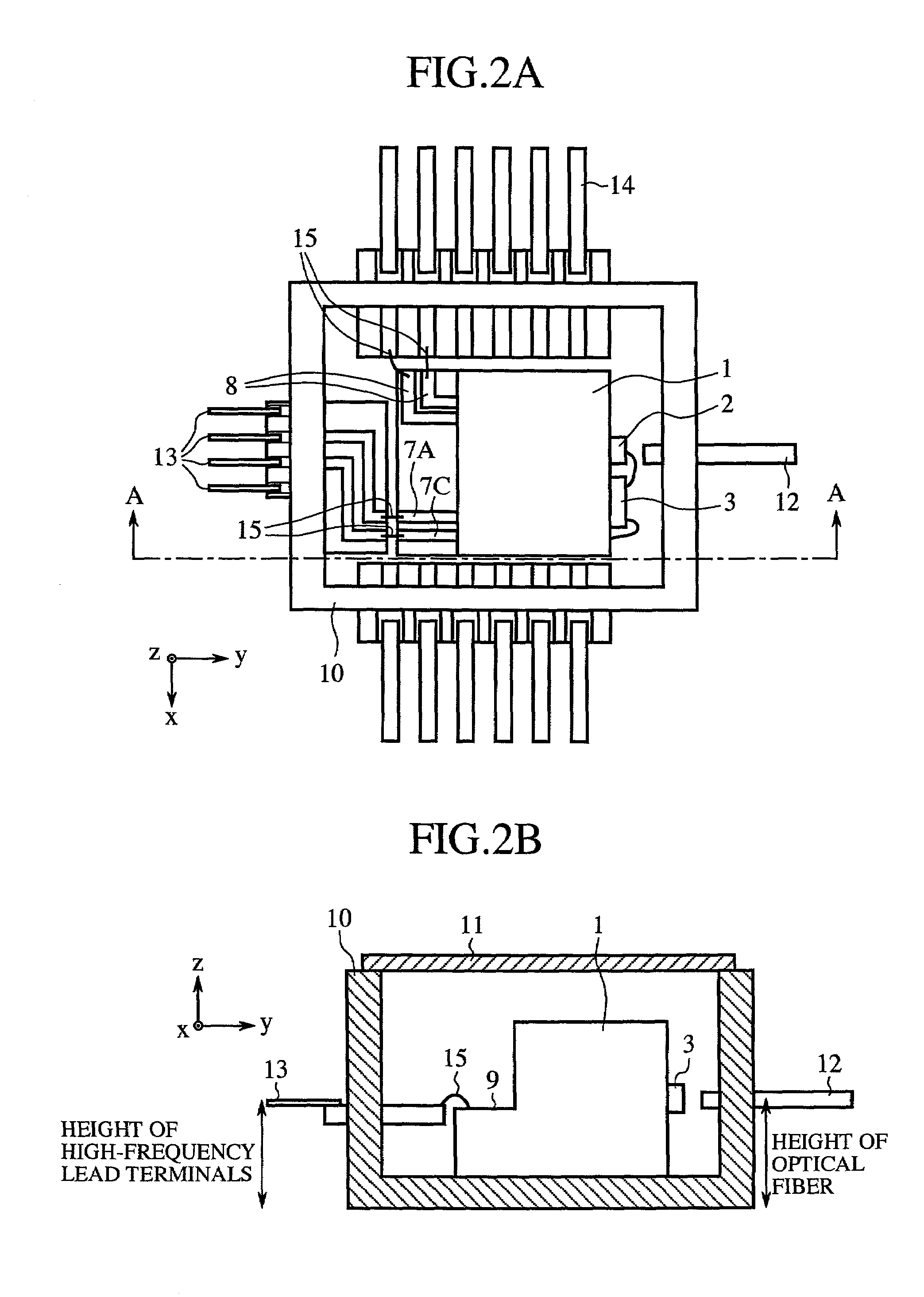Light receiving element carrier and optical receiver
a technology of light receiving element and carrier, which is applied in the direction of optical elements, waveguides, instruments, etc., can solve the problems of increasing the cost of the carrier, and increasing the height of the light receiving element carrier, so as to reduce the length of the wiring used for connecting these components with one another, the effect of reducing the heigh
- Summary
- Abstract
- Description
- Claims
- Application Information
AI Technical Summary
Benefits of technology
Problems solved by technology
Method used
Image
Examples
embodiment 1
[0047]FIGS. 1A, 1B, 3 and 4A to 4D are views for explaining the structure and features of a light receiving element carrier according to a first embodiment of the present invention, and FIGS. 2A and 2B are views for explaining the structure and features of an optical receiver including the light receiving element carrier. X-, y- and z-axes perpendicular to one another are shown in these figures.
[0048]FIGS. 1A and 1B are perspective views showing the structure of the light receiving element carrier. FIG. 2A is a top plan view showing the optical receiver including the light receiving element carrier as a module when a cover is detached from the optical receiver. FIG. 2B is a partially cross-sectional view taken along the line A—A of FIG. 2A. FIG. 3 is a perspective view showing the structure of high-frequency lines of the light receiving element carrier. Furthermore, FIGS. 4A to 4C are top plan views of the high-frequency lines respectively formed on a first plane A, a second plane B...
embodiment 2
[0066]Referring again to the top plan view of FIG. 2A of the first embodiment, the position where the differential pair of lines 7A and 7C are extending from the carrier 1 is shifted in the direction of the +x-axis with respect to the optical fiber 12. Therefore, there is a necessity to route the differential pair of lines 7A and 7C in the package 10 when the center of the optical fiber 12 needs to be aligned with the center of the corresponding pair of high-frequency lead terminals 13 connected to the differential pair of lines 7A and 7C. In this case, it is necessary to route the two lines for the differential pair of lines 7A and 7C, and therefore an upper area of the optical receiver must be increased. An light receiving element carrier according to a second embodiment of the present invention is so constructed as to solve this problem.
[0067]FIGS. 5 and 6A to 6D are views for explaining the structure and features of the light receiving element carrier according to the second emb...
embodiment 3
[0074]FIG. 7 is a perspective view showing the structure and features of a light receiving element carrier according to a third embodiment of the present invention. In FIG. 7, reference numeral 19 denotes a metallic plate (heat sink) made of a metal of a good thermal conductivity, such as copper tungsten or covar, and used for dissipating heat from a preamplifier 3.
[0075]In the third embodiment, the metallic plate 19 is disposed under a bottom of the preamplifier 3 mounted on the carrier 1. In other words, the preamplifier 3 is installed on a chip mounting surface 1A of the carrier 1 by way of the metallic plate 19 disposed between the chip mounting surface 1A of the carrier 1 and the preamplifier 3. The metallic plate 19 makes it possible for heat generated by the preamplifier 3 to pass through the metallic plate 19 and reach a package 10 within which the carrier 1 is mounted, so that the heat is dissipated.
[0076]Thus, since it is possible to dissipate the heat generated by the pre...
PUM
 Login to View More
Login to View More Abstract
Description
Claims
Application Information
 Login to View More
Login to View More - R&D
- Intellectual Property
- Life Sciences
- Materials
- Tech Scout
- Unparalleled Data Quality
- Higher Quality Content
- 60% Fewer Hallucinations
Browse by: Latest US Patents, China's latest patents, Technical Efficacy Thesaurus, Application Domain, Technology Topic, Popular Technical Reports.
© 2025 PatSnap. All rights reserved.Legal|Privacy policy|Modern Slavery Act Transparency Statement|Sitemap|About US| Contact US: help@patsnap.com



